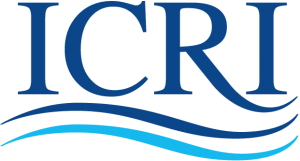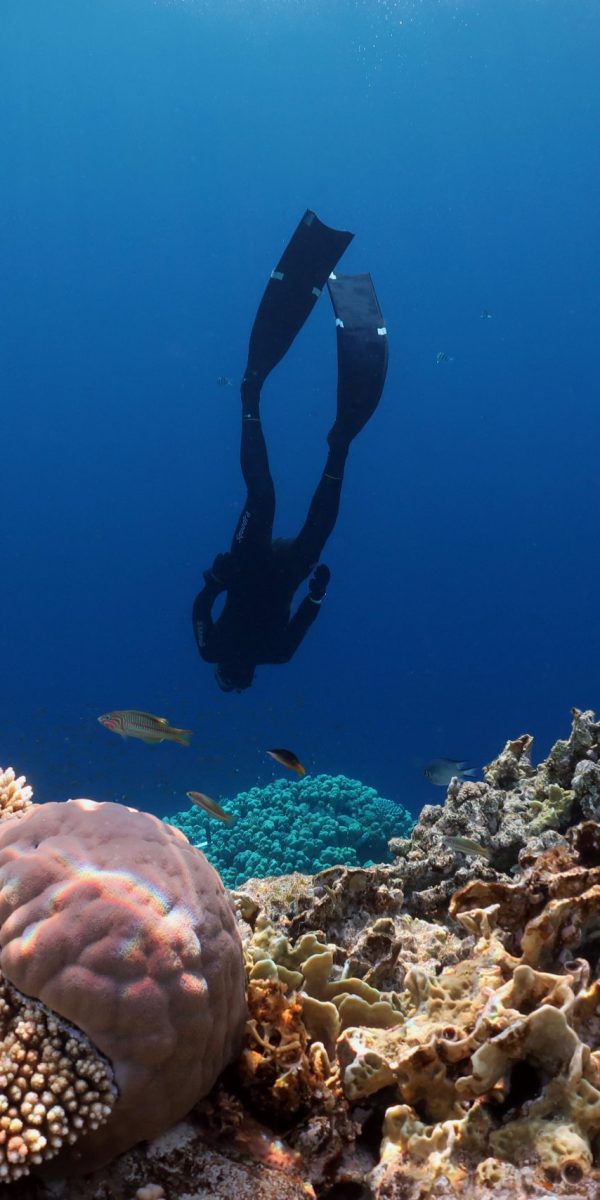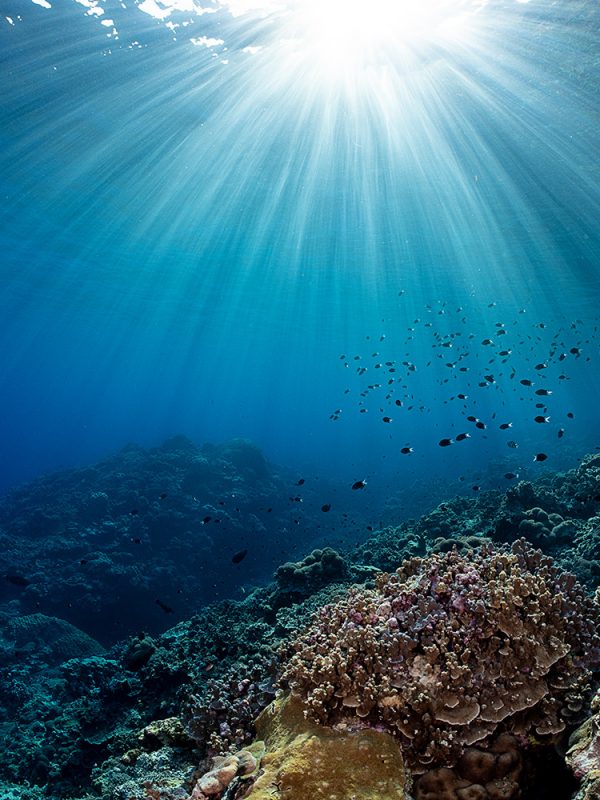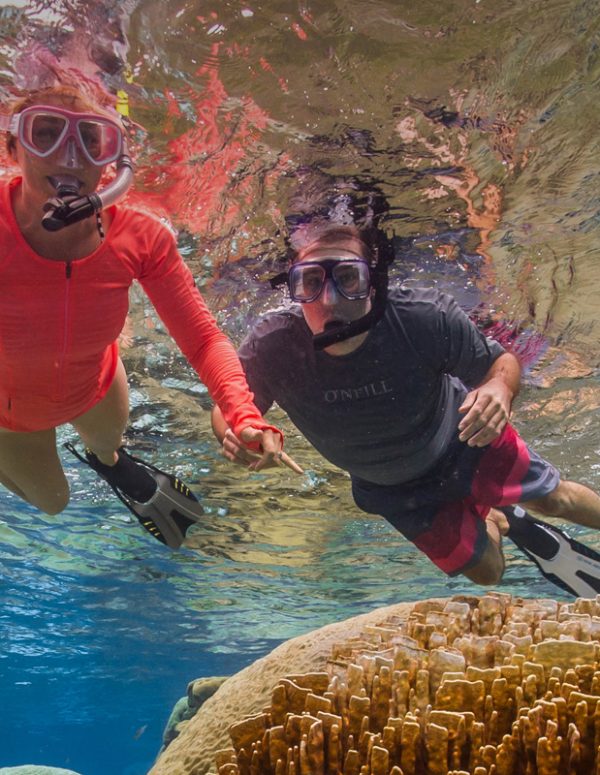The Global Coral Reef Monitoring Network (GCRMN) is a network of scientists, managers and organisations that monitor the condition of coral reefs throughout the world, aiming to provide the best available scientific information on the status and trends of coral reef ecosystems for their conservation and management.
The GCRMN was established by the International Coral Reef Initiative (ICRI) in 1995 to monitor the condition of the world’s coral reefs.
The GCRMN has published an extensive range of global, regional, and thematic reports on coral reef status and trends. The GCRMN collates and presents coral reef data, aggregating from national to regional levels, and then to a global level.
 The International Coral Reef Initiative (ICRI) is an informal partnership between Nations and organizations which strives to preserve coral reefs and related ecosystems around the world.
GCRMN is an implementing arm of ICRI, supporting its efforts by working through a global network to strengthen the provision of best available scientific information on, and communication of, the status and trends of coral reef ecosystems, for their conservation and management.
The International Coral Reef Initiative (ICRI) is an informal partnership between Nations and organizations which strives to preserve coral reefs and related ecosystems around the world.
GCRMN is an implementing arm of ICRI, supporting its efforts by working through a global network to strengthen the provision of best available scientific information on, and communication of, the status and trends of coral reef ecosystems, for their conservation and management. Accurate data on the health and status of coral reefs is key to:
The world’s tropical coasts are home to over two billion people, many of whom live in poverty and depend on coastal resources such as coral reef fish for their livelihood, sustenance, and cultural traditions. The Global Socioeconomic Monitoring Initiative for Coastal Management (SocMon) is part of the GCRMN and works through regional and local partners to facilitate community-based socioeconomic monitoring. There are currently seven regions throughout the world that are conducting socioeconomic monitoring through the SocMon Initiative: Brazil, Caribbean, Central America, Southeast Asia, Western Indian Ocean, Pacific Islands, and South Asia.
SocMon fills a critical need by advancing a global and regional understanding of human interactions with and dependence on coastal-marine resources. Socioeconomic data are collected on a suite of indicators to inform dependence on coral reef resources, perceptions of resource conditions, threats to marine and coastal resources, climate adaptation and resilience, and support for marine management strategies such as Marine Protected Areas. To date, over 130 socioeconomic assessments have been completed in 42 countries.
SocMon also facilitates training and capacity building and has produced a variety of resources available in multiple languages, including region-specific guidelines, a comprehensive manual to guide field research, a how-to on integrated monitoring, and the SocMon Spatial tool.
To see the publications click here.
SocMon History
Since 2003, socioeconomic monitoring in the world’s coral reef areas conducted through SocMon has increased exponentially. A number of chronological events precipitated this increase.

Objectives
Goal 1 sets the principal data requirements of the GCRMN. The objectives progress in complexity, whereby 1.1. defines the minimum measures necessary to quantify change reliably; 1.2 enables attribution of change to drivers; 1.3 enables interpretation of recovery processes and actions; and 1.4 assesses social, economic and natural changes in a more integrated whole.
Objectives
Goal 2 addresses GCRMN products in support of (adaptive) management and policy action (2.1), and aggregated reporting in ways relevant for tracking delivery of internationally adopted goals and targets (2.2). Tools to deliver on these objectives include the regional and global reports, and other decision support tools targeting adaptive management, policy and varied stakeholder audiences.
Objectives
Goal 3 addresses managing, securing and making data accessible on open platforms (3.1) and adopting technical innovations that are changing by orders of magnitude the type and availability of data on coral reef systems (3.2).
Objectives
Goal 4 aims to build human and technical capacity is an important function of GCRMN, both as a network of contributors/partners and as a technical body. The capacity building approach seeks to a) maximize data submission to the GCRMN, to cover as much reef area as possible regionally and globally, from as broad a range of stakeholders as possible; and b) provide an in-built evaluation process that incentivizes capacity building and delivery of Goals 1-3.
In the United Nations (UN) Environment Assembly resolution 2/12 on coral reefs, UN member states recognised the importance of the GCRMN, and called on the UN Environment to “support further development of coral reef indicators, regional coral reef assessments and preparation of a global report through GCRMN”.
The International Coral Reef Initiative (ICRI) membership adopted a resolution at the 31st ICRI General Meeting, requesting the ICRI Secretariat and UN Environment to “develop and initiate implementation of a roadmap for strengthening GCRMN”. The importance of the GCRMN is highlighted by its inclusion in one of the Themes of the 2021-2024 Plan of Action of ICRI.
Sustainable Development Goals (SDG): under SDG 14, to “conserve and sustainably use oceans, seas and marine resources”. Key targets include: 14.2 – to sustainably manage and protect ecosystems and strengthen resilience; 14.3 – to minimize and address impacts of ocean acidification; and 14.5 – to place 10% of coral reefs under effective management regimes. Monitoring coral reefs is also of relevance to other linked SDG goals.
Convention on Biological Diversity (CBD): the focus of Aichi Target 10 on coral reefs as flagship ecosystems for climate vulnerability and the CBD Conference of Parties (CoP) decision XII/23 (adopted in Pyeongchang, Democratic Republic of Korea, in October 2014) provides a policy linkage from attributing reef decline to the relevant stressors to action reducing drivers of decline.


The actions of the GCRMN are guided by an Implementation and Governance Plan (IGP), which became operational in January 2019. To ensure the IGP remains fit for purpose it is reviewed and revised periodically, including at least in 2025 and 2030, corresponding to milestones of the Sustainable Development Goals and the post-2020 biodiversity framework.
The plan establishes operational practices for the GCRMN, including strengthening the role and importance of the regions in coordinating and organising the aggregation and reporting of data, outlining procedures for ensuring data quality in the provision of key indicators from varied but comparable methods, and governance of the GCRMN under the umbrella of a Steering Committee which includes members of ICRI and is chaired by a host institution.
The implementation of the GCRMN is led by a Global Coordinator, who is supported by a host institution, and who works closely with:
Participation in the GCRMN is voluntary, based on shared goals and objectives of the GCRMN.
The GCRMN is governed by a Steering Committee that derives its mandate from the ICRI General Meeting.
The Steering Committee provides high-level oversight, guidance, advocates for the GCRMN and helps secure support and resources. Implementation of the GCRMN is led by a Global Coordinator supported by a host institution, in close partnership with Regional Coordinators, time-bound Task Forces mandated by the Steering Committee, and relevant technical experts. The GCRMN Regional Networks, each with a Regional Coordinator, are the primary structures within the GCRMN, and bring together national networks, relevant institutions and ad hoc contributors of data. Key partners and supporters to the GCRMN include other international and inter-governmental bodies and entities with relevant mandates and expertise that support coral reef monitoring. Participation in the GCRMN is voluntary, based on shared goals contained in the IGP.
The GCRMN Steering Committee provides global oversight of GCRMN. It guides and advises the Global and Regional Coordinators and advocates for GCRMN globally to support its further development and to ensure impact.
Following the GCRMN Steering Committee held online on February 7th, 2022, the formal establishment of the following Task Forces was approved:
The Terms of Reference and composition of the Task Forces are currently being reviewed by the Steering Committee, and this section will be updated in due course.
The redesign of the GCRMN website was funded by the Australian Institute of Marine Science.
An operational network of:
![]() The International Coral Reef Initiative (ICRI) is a proactive partnership between Nations and organisations which strives to preserve coral reefs and related ecosystems around the world. GCRMN is an operational network of ICRI, acting as one of its implementing arms.
The International Coral Reef Initiative (ICRI) is a proactive partnership between Nations and organisations which strives to preserve coral reefs and related ecosystems around the world. GCRMN is an operational network of ICRI, acting as one of its implementing arms.
The International Coral Reef Initiative (ICRI) is a proactive partnership between Nations and organisations which strives to preserve coral reefs and related ecosystems around the world. GCRMN is an operational network of ICRI, acting as one of its implementing arms.
Global Coral Reef Monitoring Network (GCRMN) | © 2022 All rights reserved | Powered by piknetart